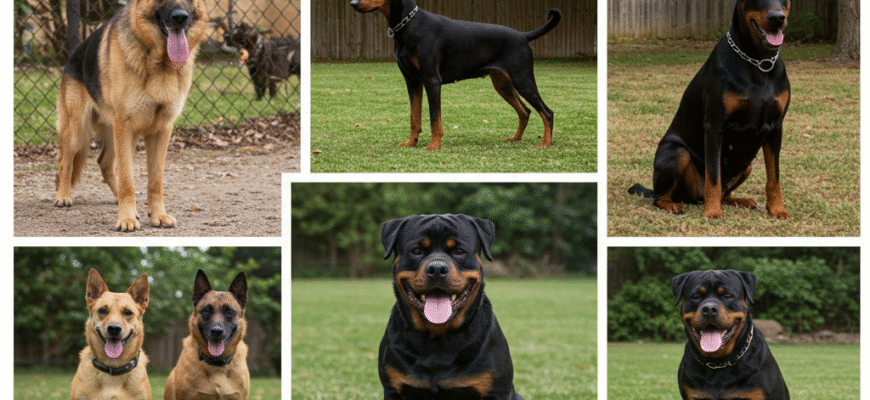Content
Understanding Protective Traits
What separates a potential protection dog from other companions? Several key characteristics come into play. Firstly, intelligence and trainability are non-negotiable. A protection dog must learn complex commands, understand boundaries, and respond reliably to its handler. Breeds known for their smarts and willingness to work often excel in this area. Secondly, loyalty is crucial. These dogs form incredibly strong bonds with their families and possess a natural desire to defend them. This loyalty fuels their protective instincts. Courage and confidence are also vital. A dog easily intimidated or fearful will not be effective in a challenging situation. They need the self-assurance to stand their ground without being needlessly aggressive. A stable temperament ensures the dog can differentiate between a genuine threat and everyday occurrences, like the mail carrier arriving or guests visiting. Finally, while not the only factor, a certain physical presence can act as a natural deterrent. Larger, more muscular breeds often appear more formidable, potentially discouraging intruders before any interaction is necessary. It’s also important to distinguish between a watchdog and a protection dog. A watchdog primarily alerts its owner to unusual sounds or approaching strangers by barking. Many smaller breeds excel at this. A protection dog, however, has the potential (developed through specific, professional training) to physically intervene if a threat escalates. This requires a different level of training, temperament, and handler control.Breeds Often Considered for Protection Roles
While individual temperament always trumps breed generalizations, certain breeds have historically been favored for their inherent protective qualities. Responsible breeding and training are always key.German Shepherd Dog
Perhaps the most iconic protection breed, the German Shepherd Dog (GSD) is renowned for its intelligence, versatility, and unwavering loyalty. Developed originally for herding, their keen minds, trainability, and courage quickly made them favorites for police and military work worldwide. GSDs bond deeply with their families and are naturally watchful. They possess the strength and athleticism to be imposing, but good breeding emphasizes a stable, confident temperament. They thrive on having a job to do and require consistent training, socialization from a young age, and plenty of physical and mental exercise to prevent boredom and potential behavioral issues. Their dedication makes them excellent family guardians when properly raised.Rottweiler
The Rottweiler is a powerful, self-assured breed with ancient roots as a cattle driver and guardian. They are deeply loyal and devoted to their families, often showing a calm and gentle side with those they trust. However, they possess strong guarding instincts and can be wary of strangers if not properly socialized. Their confidence and strength require an experienced owner who can provide firm, fair, and consistent leadership. Early socialization is absolutely critical to ensure they develop into well-adjusted adults. With the right guidance, Rottweilers are calm, courageous, and dependable protectors.Doberman Pinscher
Sleek, athletic, and incredibly intelligent, the Doberman Pinscher was specifically bred in Germany during the late 19th century as a personal protection dog. They are known for their alertness, speed, and deep loyalty to their chosen person or family. Dobermans are often described as “velcro dogs” due to their desire to be close to their owners. While they have an imposing look, well-bred Dobermans are typically sensitive and respond best to positive training methods. They require significant socialization and exercise. Their intelligence means they need mental challenges to stay happy. They can be excellent family protectors, alert to any potential threat yet affectionate companions.Belgian Malinois
Often mistaken for a leaner German Shepherd, the Belgian Malinois is an intense, high-drive breed favored by military and police K9 units globally. Their work ethic, intelligence, and athleticism are virtually unmatched. Malinois possess strong protective instincts and incredible stamina. However, this intensity means they are not suitable for novice dog owners or families looking for a casual pet. They demand extensive, ongoing training, huge amounts of physical exercise, and constant mental stimulation. Without sufficient work and structure, they can develop significant behavioral problems. For experienced handlers committed to meeting their needs, they can be exceptional working partners and protectors.Akita
Originating from Japan, the Akita is a large, dignified, and courageous breed known for its profound loyalty to family and suspicion of strangers. They possess powerful guarding instincts and are naturally protective of their home and loved ones. Akitas are independent thinkers and require an owner who understands and respects their nature, providing consistent leadership without harsh methods. Early and thorough socialization is essential, particularly regarding other dogs, as they can exhibit same-sex aggression. With their family, they are often affectionate and devoted, but their protective nature means they are always watchful.Bullmastiff
Developed in England to guard estates against poachers, the Bullmastiff is a large, powerful dog known for its courage and loyalty. Often called a “gentle giant,” they are typically calm and affectionate with their families but possess strong protective instincts. They were bred to pin and hold intruders rather than attack outright. Bullmastiffs don’t require as much exercise as some other large breeds but need early socialization and consistent training from an owner who can manage their strength. They are generally quiet guardians, observing situations before reacting.Giant Schnauzer
The Giant Schnauzer is an intelligent, energetic, and robust breed with strong territorial instincts. Originally used for driving cattle and guarding farms in Germany, they are loyal to their families and naturally protective. Their intelligence makes them highly trainable, but they require a job to do and plenty of exercise to channel their energy constructively. Consistent training and socialization are necessary. Their distinguished appearance and alert nature make them effective watchdogs, and their strength and loyalty contribute to their protection capabilities. Regular grooming is also a must for their wiry coat.Important Responsibility: Choosing a dog breed known for protective instincts is a serious commitment. These dogs require significant investment in professional training, extensive socialization from puppyhood, and consistent, knowledgeable handling throughout their lives. Without proper management, their protective traits can become liabilities. Ensure you have the time, resources, and experience necessary before bringing such a capable breed into your home.









